Fashion is a powerful force. The desire for the latest styles and trends has always been a powerful driver in the gunmaking world, and the rich and titled were the influencers of their day.
In the late 1860s and early 1870s, the pin-fire game gun, once the most modern sporting gun in the world, quickly fell out of fashion and was replaced by the central-fire gun. Just as the pin-fire gun had developed a styling all its own, with its tall, long-nosed hammers, central-fire guns were appearing with lower-profiled hammers, differently-shaped fences, and firing pin assemblies surrounded by attractive sculpted ‘splash-guards,’ a visual throwback to percussion guns.
There were two options for the owner of a pin-fire gun wishing to keep up with changing fashion. One was to purchase a new central-fire gun. Only the wealthiest could afford to do so while their pin-fire gun was still perfectly serviceable. The other option was to have their gun converted to the central-fire system, either by the original maker or by one of the many competent smiths who specialized in such work.
At its simplest, such a conversion would involve drilling and tapping the fences to accept central-fire strikers, changing the hammers, trimming the breeches to accept rimmed cartridges, and adding some form of extractor mechanism. The pin holes at the breeches could be filled or left as-is if a dual-fire gun was desired.
the results ranged from obvious to scarcely noticeable
These conversions were widely performed, and the results ranged from obvious to scarcely noticeable if done well. Such second-life guns are often found in a well-worn state, showing they remained in the shooting field until replaced with a new gun. Though renewed in a practical sense, these conversions still displayed most of their original pin-fire characteristics. They did not duplicate the aesthetics of the new central-fire guns appearing in the field.
Could a complete makeover be done, to reshape the gun into the new profile? The answer is yes, as shown here by a 12-bore by the London maker John Blanch & Son (though more correctly by the son, William Blanch). I’m presuming the conversion was done by Blanch’s firm because of the work involved. In any case, the client did not want a simple conversion but rather a complete makeover to have it look like the best central-fire guns of the day.
This was more akin to asking for plastic surgery than a simple update. To have an idea of the starting point, here is a Blanch pin-fire similar to what the conversion would have looked like initially, not many serial numbers apart, in its original state and with the house-style floral spray engraving on the fences. It’s very attractive, but the wrong shape for central-fire.
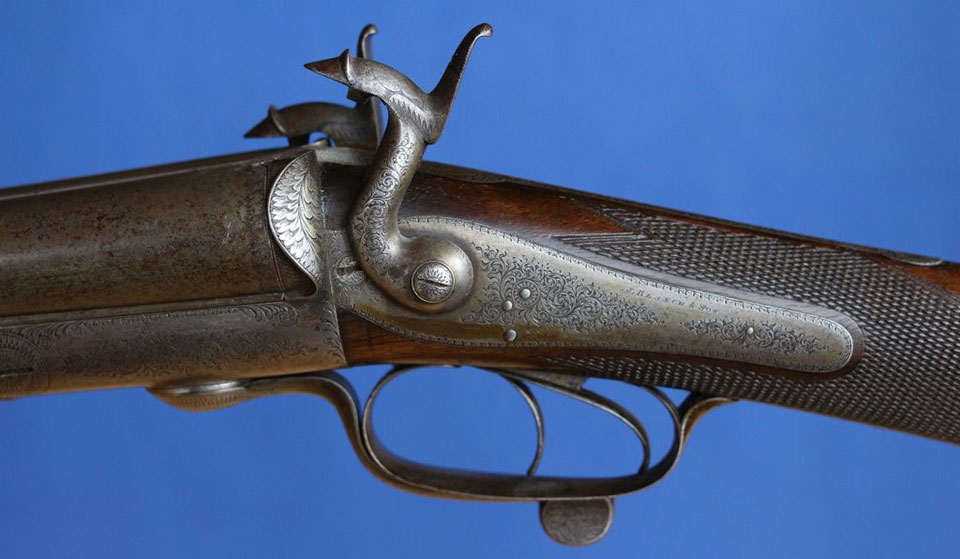
And here is the converted Blanch. The red arrow shows where the pin holes were filled. Look at the green arrows, and you start to see hidden joints made visible by 160 years of wear, where steel was added in slices. The central part of the top strap was retained, with new steel forming where the forward part of the firing pin was fitted, and a second portion was added, forming the rear of the firing pin assembly and the splash guard.
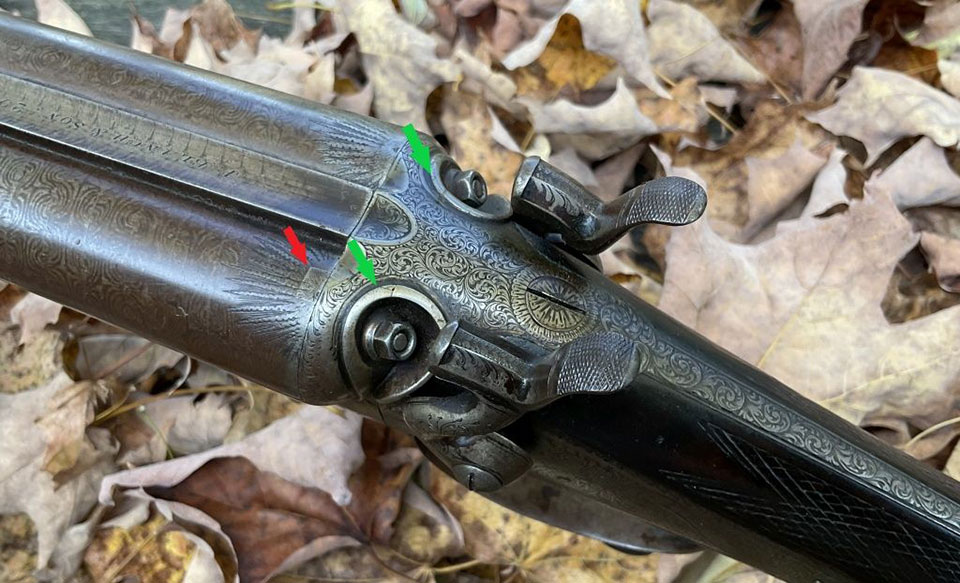
Here is another view showing the joints.
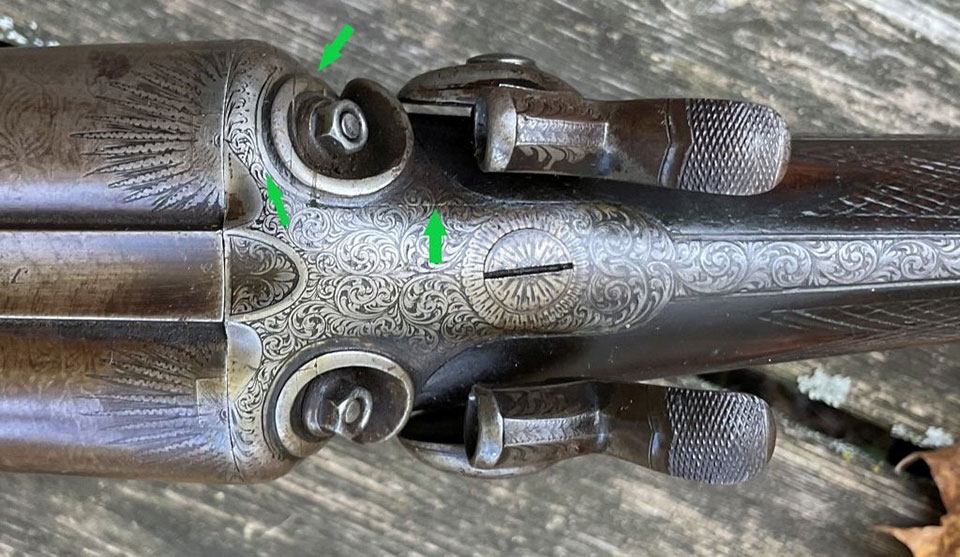
The result is quite pleasing; one must look carefully to spot the conversion.
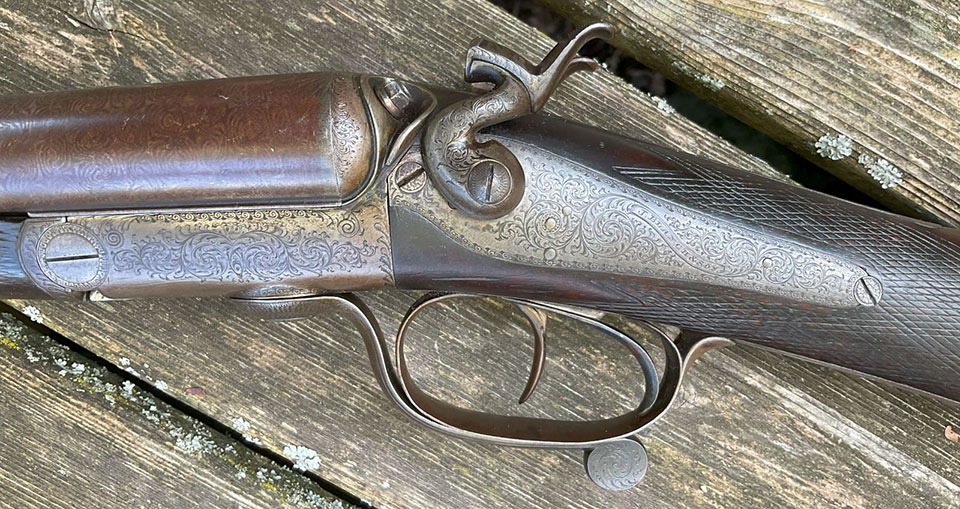
When the work was done, the joints would have been nearly invisible. It is remarkable what these clever Victorian craftsmen could do, confirming the adage that anything is possible in British gunmaking.
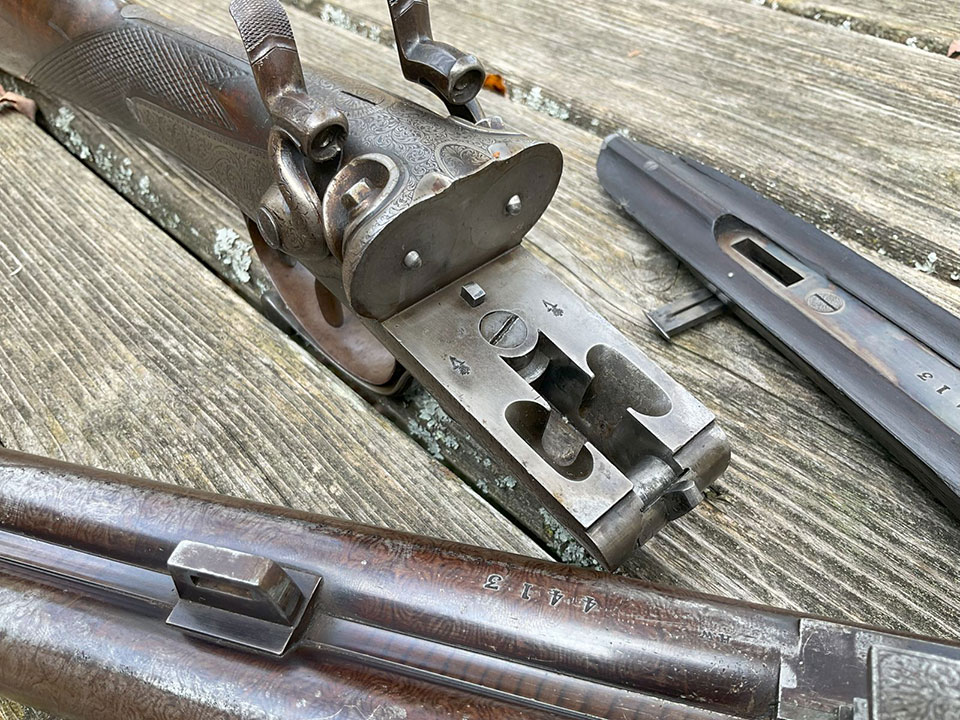
Stephen Nash
3 November, 2024
Published by Vintage Guns Ltd on



